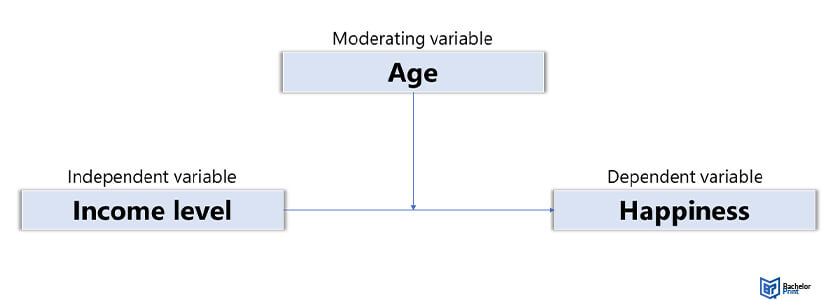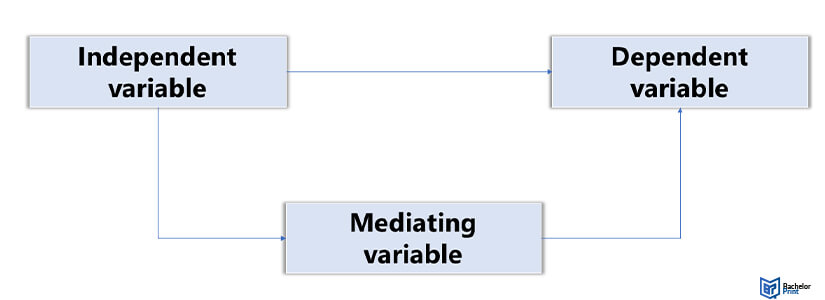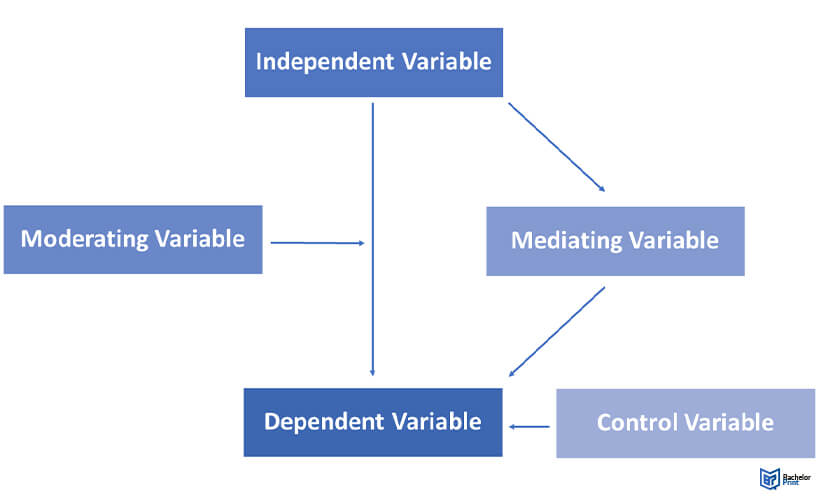
In academic writing, a conceptual framework serves as a key component of the research methodology, providing a schematic representation of the concepts and their proposed relationships. This tool not only guides data collection and interpretation but also clarifies the research question and hypothesis. The conceptual framework aims to make research conclusions more meaningful and generalizable. It outlines the purpose and the importance of the research topic.
Definition: Conceptual framework
A conceptual framework is a visual model that illustrates the anticipated relationship between the cause and effect variables. It highlights the research goals and creates a layout of their relationship to form meaningful conclusions. The conceptual framework is usually drawn from the literature review during the early stages of research to form appropriate research questions.
Conceptual framework: Independent vs. Dependent variables
Researchers define independent vs. dependent variables to test for cause and effect when developing a conceptual framework.
| Definition | Example | |
| Independent variables | • Constant and unchanged by altering other variables around them | • Somebody's age is constant even if their income changes. |
| Dependent variables | • Depend on other variables | • Test scores can be affected by the number of study hours.2 |
Unlike above, causal relationships in a conceptual framework usually have more than one independent variable.
Conceptual framework: Moderating variables
Moderating variables influence the strength of the relationship between two variables in a conceptual framework. They are used to determine the external validity of the research conclusions based on their ability to strengthen, negate or otherwise affect the association between the independent vs. dependent variables.
Moderating variables are helpful in a conceptual framework because they illustrate the relationship between different variables in a research topic.

Moderators can be divided into categorical variables such as religion, blood group, or race and quantitative variables like height, age, and income.
Conceptual framework: Mediating variables
A conceptual framework also takes mediating variables into account. They illustrate the impact of an independent variable on a dependent variable by showing how and why the effect occurs. A variable is considered a mediator if:
- It is caused by an independent variable.
- It affects the dependent variable.
- The statistical correlation between the dependent and the independent variable is more significant when it is considered than when it’s not.

Researchers use mediation analysis to test if a variable is a mediator using ANOVA and linear regression analysis. ANOVA (Analysis of Variance) tests the presence and strength of the statistical differences between the means calculated from several independent samples.
The main aims of linear regression in a conceptual framework are to test the effectiveness of a group of predictor values in predicting a result and identifying the significant predictors of the outcome.
Conceptual framework: Control variables
Control variables are also considered in the conceptual framework. They define factors controlled by the researcher as it may affect the findings of a study even though it is of no interest to the researcher when designing a conceptual framework.
Control variables are used to improve the validity of a research study by reducing the effect of other variables outside the scope of the study. They help researchers to determine the relationship between the key variables under observation.
Control variables can be managed directly by keeping them constant, for instance choosing participants within the same age group. They can also be managed indirectly by using random samples to reduce their effect.
Variables in a conceptual framework can be controlled by:
- Random assignment – Selecting random groups ensures there are no identifiable differences, which may skew your conclusions.
- Statistical controls – You can isolate the effects of the control variable by measuring and controlling it.
- Standardized procedures – Researchers should ensure the same methods are applied in all the groups in a study. Only the independent variables should be altered across groups to observe how they affect the dependent variable.

FAQs
It is an illustration of the relationship between variables in a study. It is used to form the hypothesis that guides the methods of research.
Control variables are factors that are directly or indirectly controlled by the researchers. They are extraneous variables that may affect the observations in a study.
Conceptual frameworks are used in multiple social sciences and humanities. They help in formulating and investigating the research problem.
A moderating variable influences the effect of an independent variable on a dependent variable. It is used to measure the impact of an additional variable on the dependent-independent variable relationship.